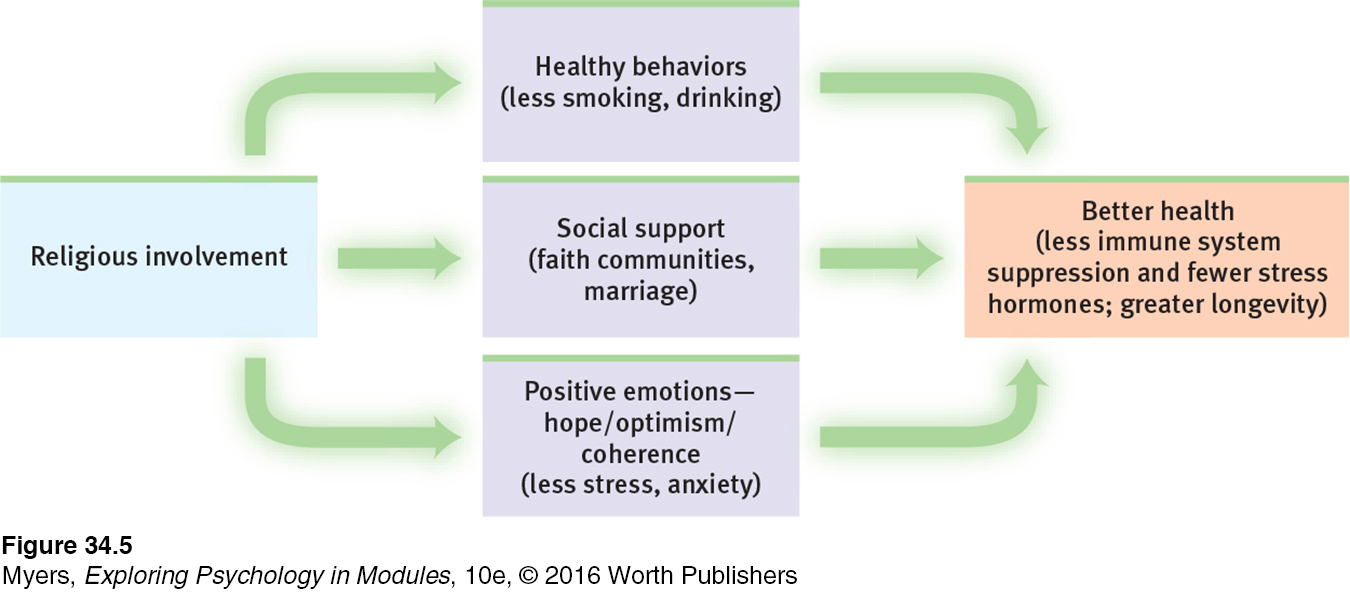34.2 Reducing Stress
Having a sense of control, developing more optimistic thinking, and building social support can help us experience less stress and thus improve our health. Moreover, these factors interrelate: People who are upbeat about themselves and their future have tended also to enjoy health-
426
Aerobic Exercise
34-
aerobic exercise sustained exercise that increases heart and lung fitness; may also alleviate depression and anxiety.
Aerobic exercise is sustained, oxygen-
Exercise helps fight heart disease by strengthening the heart, increasing bloodflow, keeping blood vessels open, and lowering both blood pressure and the blood pressure reaction to stress (Ford, 2002; Manson, 2002). Inactivity can be toxic. People who exercise suffer half as many heart attacks as do others who are inactive (Powell et al., 1987; Visich & Fletcher, 2009). Exercise makes your muscles hungry for the fats that, if not used by muscles, can contribute to clogged arteries (Barinaga, 1997). In one study of over 650,000 American adults, walking 150 minutes per week predicted living seven more years (Moore et al., 2012). Regular exercise in later life also predicts better cognitive functioning and reduced risk of neurocognitive disorder and Alzheimer’s disease (Kramer & Erickson, 2007).
Does exercise also boost the spirit? Many studies reveal that aerobic exercise can reduce stress, depression, and anxiety. Americans, Canadians, and Britons who have at least three weekly aerobic exercise sessions manage stress better, exhibit more self-
But we could state this observation another way: Stressed and depressed people exercise less. These findings are correlations, and cause and effect are unclear. To sort out cause and effect, researchers experiment. They randomly assign stressed, depressed, or anxious people either to an aerobic exercise group or to a control group. Next, they measure whether aerobic exercise (compared with a control activity that doesn’t involve exercise) produces a change in stress, depression, anxiety, or some other health-
 See LaunchPad’s Video: Random Assignment below for a helpful tutorial animation about this important part of effective research design.
See LaunchPad’s Video: Random Assignment below for a helpful tutorial animation about this important part of effective research design.
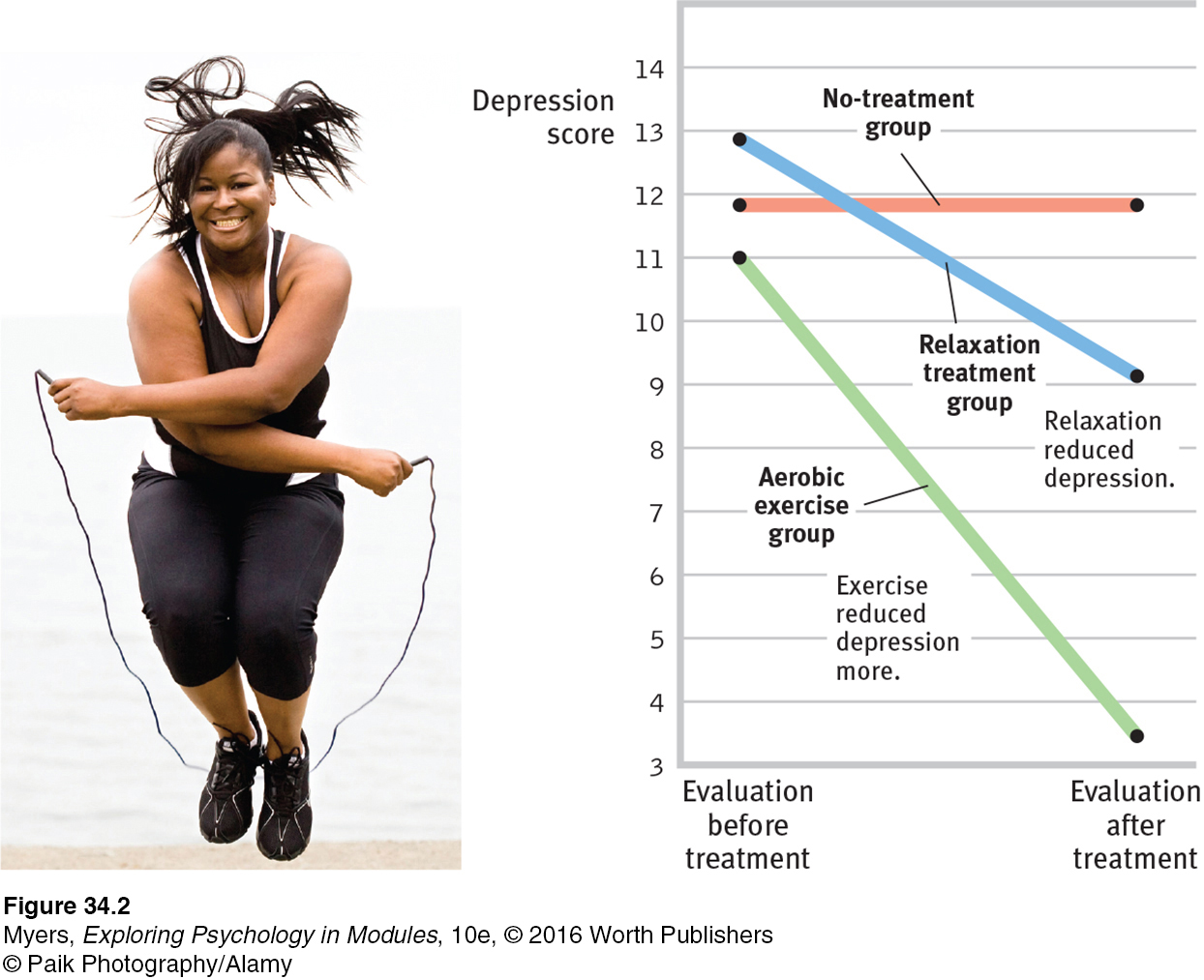
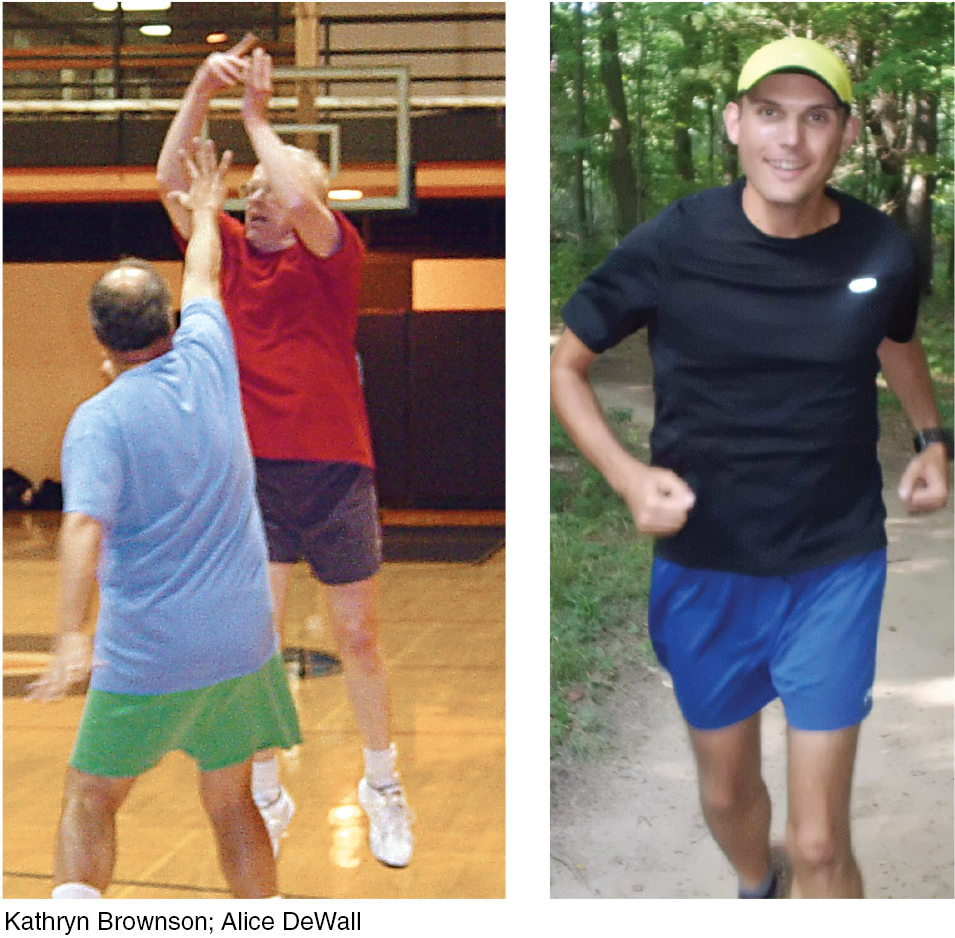
Dozens of other experiments and longitudinal studies confirm that exercise prevents or reduces depression and anxiety (Conn, 2010; Pinto Pereira et al., 2014; Windle et al., 2010). When experimenters randomly assigned depressed people to an exercise group, an antidepressant group, or a placebo pill group, exercise diminished depression as effectively as antidepressants—
427
Vigorous exercise provides a substantial and immediate mood boost (Watson, 2000). Even a 10-
On a simpler level, the sense of accomplishment and improved physique and body image that often accompany a successful exercise routine may enhance one’s self-
Relaxation and Meditation
34-
Knowing the damaging effects of stress, could we learn to counteract our stress responses by altering our thinking and lifestyle? In the late 1960s, some respected psychologists began experimenting with biofeedback, a system of recording, amplifying, and feeding back information about subtle physiological responses, many controlled by the autonomic nervous system. Biofeedback instruments mirror the results of a person’s own efforts, enabling the person to learn which techniques do (or do not) control a particular physiological response. After a decade of study, however, the initial claims for biofeedback seemed overblown and oversold (Miller, 1985). In 1995, a National Institutes of Health panel declared that biofeedback works best on tension headaches.
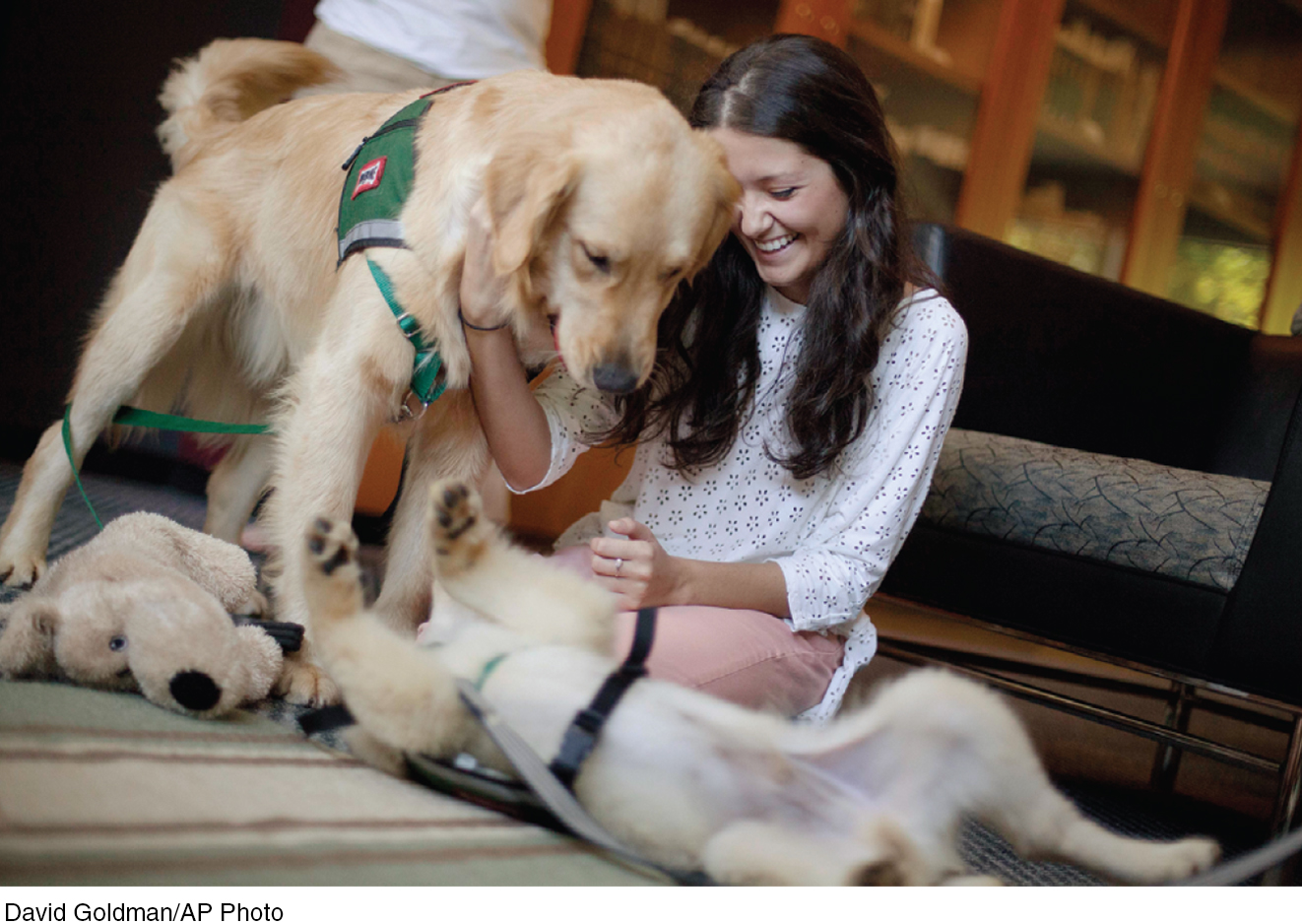
Simple methods of relaxation, which require no expensive equipment, produce many of the results biofeedback once promised. FIGURE 34.2 pointed out that aerobic exercise reduces depression. But did you notice in that figure that depression also decreased among women in the relaxation treatment group? More than 60 studies have found that relaxation procedures can also help alleviate headaches, hypertension, anxiety, and insomnia (Nestoriuc et al., 2008; Stetter & Kupper, 2002).
Such findings would not surprise Meyer Friedman, Ray Rosenman, and their colleagues. They tested relaxation in a program designed to help Type A heart attack survivors (who are more prone to heart attacks than their Type B peers) reduce their risk of future attacks. They randomly assigned hundreds of middle-
428
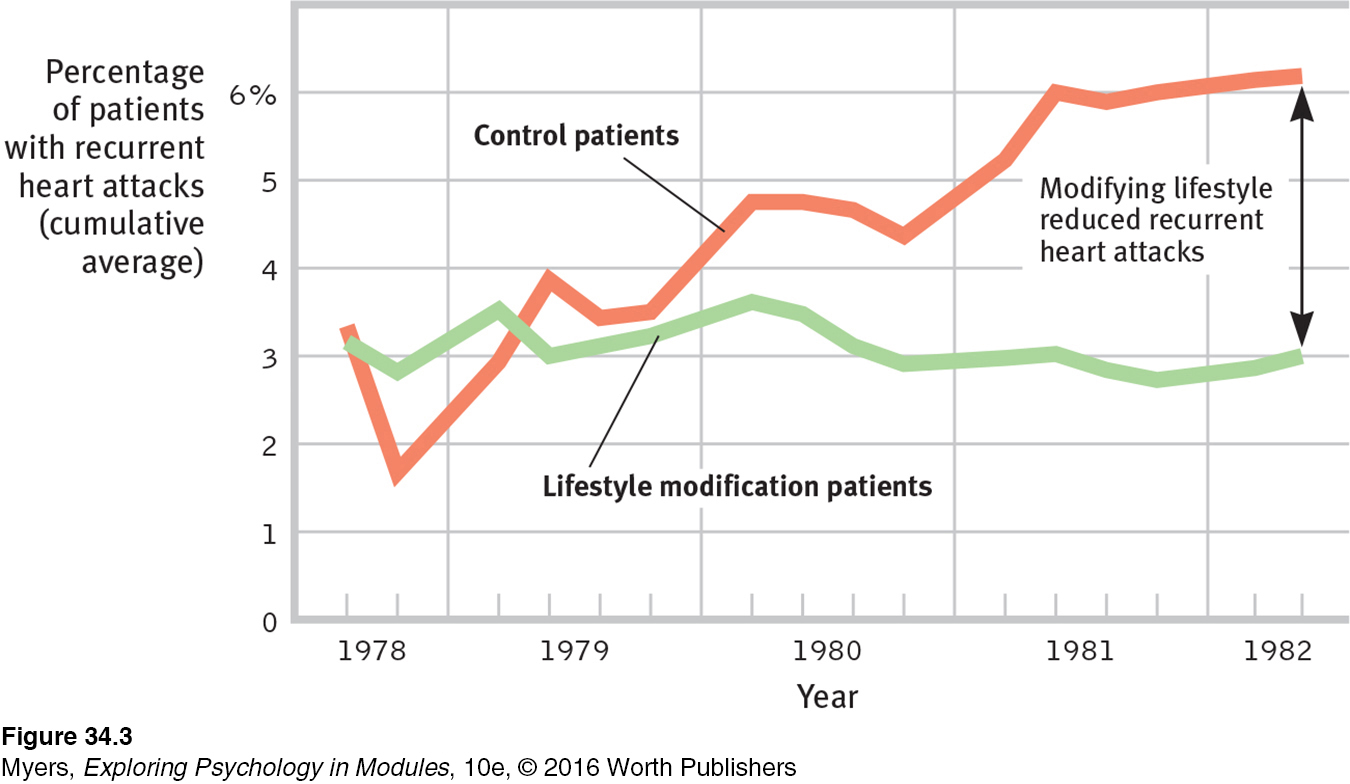
Time may heal all wounds, but relaxation can help speed that process. In one study, surgery patients were randomly assigned to two groups. Both groups received standard treatment, but the second group also experienced a 45-
“Sit down alone and in silence. Lower your head, shut your eyes, breathe out gently, and imagine yourself looking into your own heart. . . . As you breathe out, say ‘Lord Jesus Christ, have mercy on me.’ . . . Try to put all other thoughts aside. Be calm, be patient, and repeat the process very frequently.”
Gregory of Sinai, died 1346
mindfulness meditation a reflective practice in which people attend to current experiences in a nonjudgmental and accepting manner.
Meditation is a modern practice with a long history. In many of the world’s great religions, meditation has been used to reduce suffering and improve awareness, insight, and compassion. Numerous studies have confirmed the psychological benefits of meditation (Goyal et al., 2014; Sedlmeier et al., 2012). Today, it has found a new home in stress management programs, such as mindfulness meditation. If you were taught this practice, you would relax and silently attend to your inner state, without judging it (Kabat-
Practicing mindfulness may improve many health measures. In one study of 1140 people, some received mindfulness-

So what’s going on in the brain as we practice mindfulness? Correlational and experimental studies offer three explanations. Mindfulness
strengthens connections among regions in our brain. The affected regions are those associated with focusing our attention, processing what we see and hear, and being reflective and aware (Berkovich-
Ohana et al., 2014; Ives- Deliperi et al., 2011; Kilpatrick et al., 2011). 429
activates brain regions associated with more reflective awareness (Davidson et al., 2003; Way et al., 2010). When labeling emotions, “mindful people” show less activation in the amygdala, a brain region associated with fear, and more activation in the prefrontal cortex, which aids emotion regulation (Creswell et al., 2007).
calms brain activation in emotional situations. This lower activation was clear in one study in which participants watched two movies—
one sad, one neutral. Those in the control group, who were not trained in mindfulness, showed strong differences in brain activation when watching the two movies. Those who had received mindfulness training showed little change in brain response to the two movies (Farb et al., 2010). Emotionally unpleasant images also trigger weaker electrical brain responses in mindful people than in their less mindful counterparts (Brown et al., 2013). A mindful brain is strong, reflective, and calm.
And then there are the mystics who seek to use the mind’s power to enable novocaine-
Exercise and meditation are not the only routes to healthy relaxation. Massage helps relax premature infants and those suffering pain. An analysis of 17 experiments revealed another benefit: Massage therapy relaxes muscles and helps reduce depression (Hou et al., 2010).
Faith Communities and Health
34-
A wealth of studies—
How should we interpret such findings? Correlations are not cause-
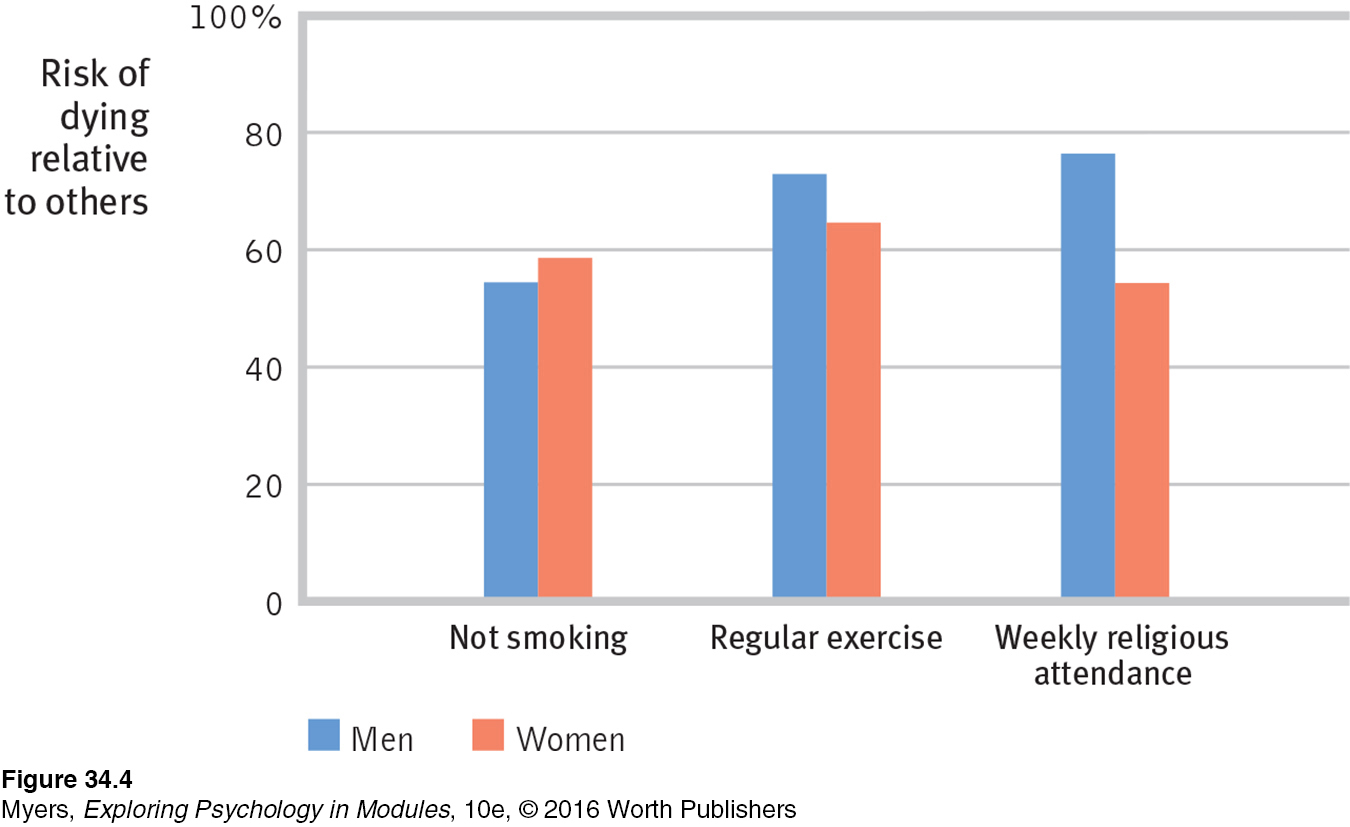

430
These correlational findings do not indicate that people who have not been religiously active can suddenly add 8 years of life if they start attending services and change nothing else. Nevertheless, the findings do indicate that religious involvement, like nonsmoking and exercise, is a predictor of health and longevity. Research points to three possible explanations for the religiosity-
Healthy behaviors Religion promotes self-
control (DeWall et al., 2014; McCullough & Willoughby, 2009). And that helps explain why religiously active people tend to smoke and drink much less and to have healthier lifestyles (Islam & Johnson, 2003; Koenig & Vaillant, 2009; Masters & Hooker, 2013; Park, 2007). In one Gallup survey of 550,000 Americans, 15 percent of the very religious were smokers, as were 28 percent of those nonreligious (Newport et al., 2010). But such lifestyle differences are not great enough to explain the dramatically reduced mortality in the Israeli religious settlements. In American studies, too, about 75 percent of the longevity difference remained when researchers controlled for unhealthy behaviors, such as inactivity and smoking (Musick et al., 1999). Social support Could social support explain the faith factor (Ai et al., 2007; George et al., 2002; Kim-
Yeary et al., 2012)? Faith is often a communal experience. To belong to one of these faith communities is to have access to a support network. Religiously active people are there for one another when misfortune strikes. Moreover, religion encourages marriage, another predictor of health and longevity. In the Israeli religious settlements, for example, divorce has been almost nonexistent. 431
Positive emotions Even after controlling for gender, unhealthy behaviors, preexisting health problems, and social support, the mortality studies have found that religiously engaged people tend to live longer (Chida et al., 2009). Researchers speculate that religiously active people may benefit from a stable, coherent worldview, a sense of hope for the long-
term future, feelings of ultimate acceptance, and the relaxed meditation of prayer or other religious observances. These intervening variables may also help to explain why the religiously active seem to have healthier immune functioning, fewer hospital admissions, and, for AIDS patients, fewer stress hormones and longer survival (Ironson et al., 2002; Koenig & Larson, 1998; Lutgendorf et al., 2004).
